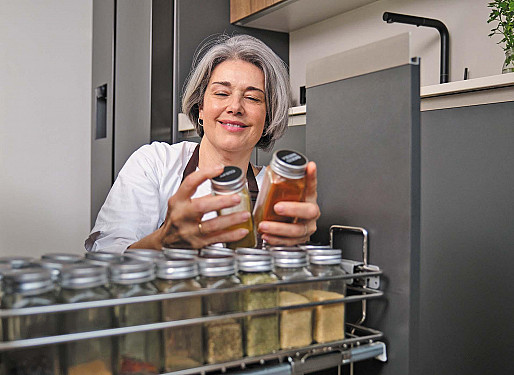Best source of vitamins? Your plate, not your medicine cabinet

Vitamins and mineral supplements from a bottle simply can't match all the biologically active compounds teeming in a well-stocked pantry.
By focusing on the big picture, it's easy to get plenty of the vitamins, minerals, and other micronutrients you need to keep you healthy and prevent disease. Here are some tips.
Food High in Fiber
Fiber is the part of plant foods that we can't digest. Eating foods high in fiber helps reduce total and LDL (andamp;quot;harmful") cholesterol, improve blood sugar control, and prevent constipation. High-fiber foods also help with weight loss by making you feel full.
There are lots of high-fiber foods to choose from:
- brown rice
- bulgur (cracked wheat)
- barley
- oats
- nuts
- beans and lentils
- apples
- blueberries
- carrots
Food High in Four Essential Vitamins and Minerals
Vitamins are organic substances found in plants and animals. Minerals are inorganic elements from the earth (soil and water). Both are essential for normal growth and optimal health.
Here are four vitamins and minerals crucial for good health, plus the best food sources of each:
- iron — meat, poultry, fish, and beans
- vitamin A — carrots, sweet potatoes, spinach, kale
- vitamin B12 — meat, poultry, fish
- vitamin E — nuts, seeds, vegetable oils
Food High in Healthy Phytochemicals
Phytochemicals are chemicals made by plants. They are not essential to life, but they do have a positive effect on health. Diets rich in phytochemicals have been associated with a lower risk of chronic diseases, such as cancer and heart disease. They are found in fruits, vegetables, beans, and grains.
Below are six key phytochemicals, plus the best food sources of each:
- flavonoids — blueberries, raspberries, strawberries, blackberries
- carotenoids — orange vegetables such as carrots, sweet potatoes, and winter squash
- lycopene — tomatoes, watermelon, red bell peppers
- isoflavones — soy foods, such as soybeans (or edamame)
- resveratrol — red grapes, blueberries, peanuts
- catechins — teas (especially green tea), blueberries, apples, plums
Be creative
Adding finely grated carrots or zucchini to pasta sauce, meat loaf, chili, or a stew is one way to get an extra serving of vegetables. Dip vegetables into hummus or another bean spread, some spiced yogurt, or even a bit of ranch dressing. Slather peanut butter on a banana or slices of apple. Try mashed avocado as a dip with diced tomatoes and onions, or as a sandwich spread, topped with spinach leaves, tomatoes, and a slice of cheese.
To learn more ways to ensure that you get the vitamins and minerals your body needs, buy Making Sense of Vitamins and Minerals, a Special Health Report from Harvard Medical School.
Image: © Nathalie Pellenkoft | GettyImages
Disclaimer:
As a service to our readers, Harvard Health Publishing provides access to our library of archived content. Please note the date of last review or update on all articles.
No content on this site, regardless of date, should ever be used as a substitute for direct medical advice from your doctor or other qualified clinician.















